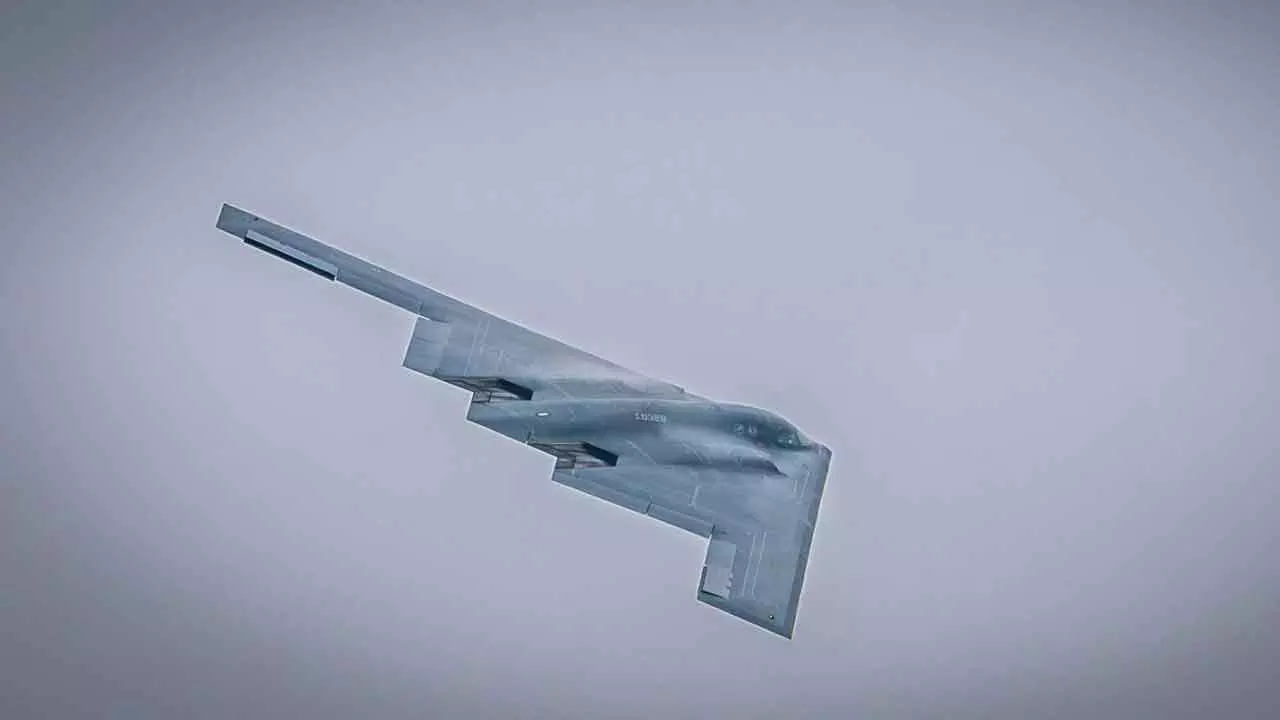India Dispels 'Fake News': US Did NOT Use Indian Airspace for Iran Strikes, Says PIB Fact Check
The Indian government's PIB Fact Check unit denies viral claims that the US military used Indian airspace for "Operation Midnight Hammer" against Iranian nuclear sites, debunking the 'fake news' with official statements and Pentagon details
India Dispels 'Fake News': US Did NOT Use Indian Airspace for Iran Strikes, Says PIB Fact Check

In an era where misinformation spreads with alarming speed, the Indian government moved swiftly on Sunday to debunk a viral claim circulating across social media platforms. Reports suggesting that the United States military leveraged Indian airspace for its "Operation Midnight Hammer" – a recent, impactful strike against three key Iranian nuclear facilities at Fordow, Natanz, and Esfahan – have been categorically denied by official sources.
The Fact Check unit of the Press Information Bureau (PIB), the government's trusted arm for verifying information, issued a clear and concise statement labeling these claims as "FAKE." Their official clarification left no room for ambiguity: "Indian Airspace was NOT used by the United States during Operation Midnight Hammer."
This firm rebuttal from the PIB comes amidst a flurry of social media posts, particularly on X (formerly Twitter), that had falsely implied India's involvement or complicity in Sunday's U.S. attack on Iran. Such narratives, if left unchecked, could have significant geopolitical repercussions, impacting India's standing and relations in the volatile Middle East.
To further solidify its denial, the PIB referenced a crucial press briefing by none other than the Chairman of the U.S. Joint Chiefs of Staff, General Dan Caine. During this detailed Pentagon briefing, General Caine presented comprehensive maps and timelines of "Operation Midnight Hammer," explicitly illustrating the alternative routes taken by U.S. aircraft, thereby dismantling the baseless claims.
"Several social media accounts have claimed that Indian Airspace was used by the United States to launch aircrafts against Iran during Operation Midnight Hammer. This claim is FAKE. Indian Airspace was NOT used by the United States during Operation Midnight Hammer. During the Press Briefing Joint Chiefs of Staff Chair Gen. Dan Caine explained the route used by US aircraft," the government's Fact Check unit reiterated in its post on X, emphasizing transparency and accuracy.
Unpacking 'Operation Midnight Hammer': A Precision Strike
The term "Operation Midnight Hammer" has gained significant traction following Sunday's events. President Donald Trump himself confirmed that the United States had targeted and successfully struck three vital Iranian enrichment facilities – Fordow, Natanz, and Esfahan – hailing the operation as a "spectacular military success." This decisive intervention by the U.S. into the long-standing Iran-Israeli conflict marks a significant escalation, intensifying fears of a wider regional conflagration in the already tumultuous Middle East.
The operation reportedly involved the deployment of advanced B-2 stealth bombers. These formidable aircraft, renowned for their long-range capabilities and stealth technology, were utilized to deliver devastating bunker-buster bombs on two of the sites, while Tomahawk missiles were precisely aimed at the Esfahan nuclear facility. Notably, these B-2 bombers are designed for extended missions, even featuring on-board amenities like microwaves, restrooms, and refrigerators to ensure pilot comfort during their demanding, multi-hour operations, such as the reported 37-hour journey from Missouri to Iran.
General Dan Caine's Route Clarification
During his press briefing, General Dan Caine provided granular detail on the execution of "Operation Midnight Hammer," visually confirming that no U.S. aircraft encroached upon Indian airspace.
"At approximately 6:40 PM EST [U.S. Eastern Standard Time], 2:10 AM Iran time, the lead B-2 dropped GBU 57 MOP (Massive Ordnance Penetrator) weapons on the first of several aim points at Fordow," General Caine explained, outlining the precision of the attack. He further elaborated that a total of 14 Massive Ordnance Penetrator (MOPs) bombs were deployed against two nuclear target areas. Meanwhile, Tomahawk missiles struck the Esfahan site, strategically timed to ensure the element of surprise was maintained throughout the operation.
"As the President stated last night, the remaining bombers then hit their targets as well, with a total of 14 MOPs dropped against two nuclear target areas. All three Iranian nuclear infrastructure targets were struck between 6:40 PM and 7:05 PM EST (2:10 AM local time Iran), with the Tomahawk missiles being the last to strike at Isfahan to ensure we retain the element of surprise throughout the operation," he added, highlighting the synchronized nature of the assault.
General Caine also shed light on the sophisticated deception tactics employed by the U.S. military to achieve tactical surprise, including the use of decoys. He revealed that a large B-2 strike package was launched from the U.S. on the intervening night of Friday and Saturday, with some B-2 bombers intentionally deployed into the Pacific as a diversion. "The main strike package, comprised of seven B2 Spirit bombers, each with two crew members, proceeded quietly to the East with minimal communications," he concluded, underscoring the covert nature of the actual mission.
The PIB's swift action in fact-checking these claims serves as a critical reminder of the importance of verifying information, especially in times of heightened geopolitical tensions, to prevent the spread of harmful misinformation and maintain diplomatic clarity.

